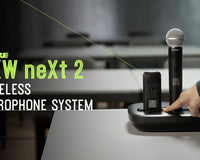
Organizations can now incorporate drones into their operations as UAV technology becomes more readily available. While the use of UAVs is already prevalent in industries such as agriculture and construction, its application in public safety still needs to be improved, except in one area - crisis and disaster management. This field can significantly benefit from the use of drones.
Emergency and disaster management is an essential concept that all governments and many organizations need to prepare for. The Federal Emergency Management Agency (FEMA) in the United States supports citizens and emergency personnel in building, sustaining, and improving the nation’s capability to prepare for, protect against, respond to, recover from, and mitigate all hazards. Crisis management is broken down into five stages - prevention, mitigation, preparedness, response, and recovery - and drones can be used in various ways.

FEMA deploys unmanned aircraft systems or drones to support emergency incident situational awareness, monitor and assess critical infrastructure, provide disaster relief by transporting emergency medical supplies to remote locations, and aid efforts to secure the country's borders. UAVs can assess soil erosion and potential flood areas and provide detailed 2D and 3D topographical maps of regions like sea barriers, which may give way during a hurricane. In the prevention stage, drones offer an affordable alternative to obtaining aerial data that can identify potential weak points in infrastructure.
This data can be used in the mitigation and preparedness stages to prepare defenses, replenish resources, and take necessary steps to limit potential damage in the event of a disaster. FEMA and other organizations can maintain topographical data that can be used to restore local areas impacted by natural disasters.
Multiple emergency rescue teams from different organizations and departments are dispatched during a disaster. Communication and power lines may need to be fixed, leaving rescue teams disconnected with limited communication and information. New technologies are required to improve disaster management efficiency that can provide telecommunication and spatial data and operate autonomously. Drones can provide rescue teams with the connection and information they desperately need to save lives, as different groups can connect to one source and access live views of the information the drone is capturing.
UAV technology is changing how the world operates, and when used to its total capacity, drone technology can become an invaluable part of disaster response toolkits. Compared to other technologies traditionally used in disaster relief, drones are cost-effective, faster, and better suited for extreme weather conditions. Their ability to access compromised areas makes their use much more efficient than conventional methods, such as helicopters. We can provide more information if you're interested in learning more about how your organization can leverage drones.
Learn More: DJI Professional Drones
Read more: Leveraging the Latest Technology Trends to Improve FEMA Emergency Operations Center







